Cooking Bánh Chưng may seem simple, but achieving perfectly delicious and vibrant green cakes is not something everyone can do. The following tips outline the steps and secrets to help you prepare a delicious pot of Bánh Chưng for the Lunar New Year.
The folk song “Bánh Chưng green beside red watermelon, golden apricot branch beside fresh peach branch” has long served as an intangible measure, symbolizing the completeness of the earth and sky and the auspiciousness for the coming year. Therefore, making a Bánh Chưng that is distinctly flavorful, with a soft and chewy outer layer that maintains an appealing green color, is no simple task.

Bánh Chưng is a traditional dish for the Vietnamese during the Lunar New Year.
Bánh Chưng, with its square shape and green color, symbolizes the Earth. This dish is also offered to ancestors during the Lunar New Year to express gratitude for the nurturing and sacrifices of parents.
In recent years, as Lunar New Year approaches, families, whether in the city or the countryside, rush to buy dong leaves, glutinous rice, and other ingredients to wrap Bánh Chưng. Although it requires considerable effort, it brings the family joy in celebrating the New Year, allowing children to understand the cultural traditions of their ancestors.
The tradition of wrapping and cooking Bánh Chưng has been passed down through generations of Vietnamese, from mothers to children, grandmothers to grandchildren, and so forth, making this spiritual dish even more cherished. The ingredients used for making Bánh Chưng are mostly similar, but the flavors and colors of the cakes can vary depending on the tastes and experiences of each region or family.
Many people believe that boiling Bánh Chưng is very simple, but to achieve truly green, delicious cakes that last, every step must be perfect.
Ways to Naturally Boil Green Bánh Chưng for the Lunar New Year
1. Soak the glutinous rice in lye water. Lye water is also an alkaline medium, so after cooking, the rice in the cake cooks quickly and becomes very clear. This method can also be effectively applied to Bánh Chưng.

Lye water is an alkaline medium, so after cooking, the rice in the cake cooks quickly and becomes very clear.
2. Use crushed ginger mixed with the rice just before wrapping the cake, which will give the cake a consistent green color from the outer layer to the filling and an exceptionally fragrant aroma.
3. Soak the rice in pineapple water for 1 to 3 hours or add lemon juice to the rice before wrapping, which will help the cake cook faster. However, do not soak for too long as the rice may turn to mush.
4. When cooking, add a little sodium bicarbonate (NaHCO3), just like adding a bit to leafy vegetables when boiling to maintain their green color.
5. Dong leaves must be thoroughly washed one by one in several waters, then dried with a clean cloth. Before wrapping the cake, the leaves should be blanched in boiling water to eliminate any mold spores. The number of leaves used for each cake should depend on the weather; if it’s cool, use 6 leaves; if it’s hot, use 10 leaves for better preservation.
6. The glutinous rice must be rinsed thoroughly until the water runs clear. This is to wash away all the dust and bran that sticks to the rice grains, resulting in a clearer cake that doesn’t spoil quickly.
7. When cooking the cake, use extra leaves to line the bottom and the inside of the pot to prevent burning. Additionally, these leaves will help the cooking water stay green.
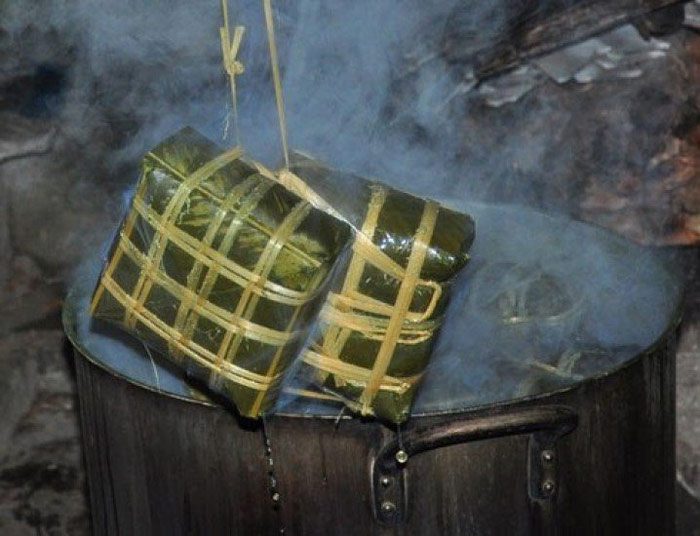 Halfway through cooking, you must remove the cake and rinse it in cold water.
Halfway through cooking, you must remove the cake and rinse it in cold water.
8. Halfway through cooking, you must remove the cake and rinse it in cold water, replace all the water in the pot, and continue cooking. This will ensure the cakes turn out greener, softer, and tastier.
9. For Bánh Chưng, after cooking, there should be a step of pressing out the water, while for Bánh Tét, after removing it, rinse it in cold water and roll it evenly with your hands. Place a weight on top of the Bánh Chưng after cooking. After boiling, place the cake on a table and use a cutting board or a heavy plank to press it down to expel water. This method helps the cake become denser and last longer than usual.
10. Use a metal pot to cook the cake. The metal pot creates an alkaline environment inside, which helps maintain the green color of the cake.
Notes When Cooking Bánh Chưng
- Prepare a tall pot that is large enough to make it easier to cook Bánh Chưng.
- One of the keys to cooking Bánh Chưng quickly is how you arrange the cakes in the pot. Although this seems like a simple step, it plays a significant role. Before placing the cakes in the pot, you should lay down a few layers of dong leaves at the bottom to prevent burning and help the cakes cook evenly. When arranging the cakes, do not place them too loosely, as this will cause uneven cooking. However, do not pack them too tightly, as they may burst when cooking. The ideal arrangement is to place them in rows and then stack them on top of each other.
- When the water is boiling, remember to reduce the heat, whether using a wood stove, charcoal, or electric stove! Keep the heat low enough to ensure the Bánh Chưng cooks evenly.
- The ideal cooking time for Bánh Chưng is between 8 to 10 hours. As the cooking water evaporates, be sure to add more water immediately to keep the cakes submerged; this way, the Bánh Chưng will cook evenly and the rice inside will not be undercooked.
- Check when the cakes are done by removing them from the pot and soaking them in cold water for about 15-20 minutes. Place the cakes on a table and press them down with a heavy object to remove excess water and enhance their texture. For Bánh Tét, simply hang them up to drain in a dry, dust-free place without direct sunlight.
- If your Bánh Chưng is undercooked, unwrap it and rewrap it. Then, boil or steam it again until fully cooked.
- Bánh Chưng and Bánh Tét are both made from glutinous rice, so they will harden when stored in the refrigerator. However, if the weather is hot and humid, refrigerating them becomes necessary. Remember to cover the surface of the cake with plastic wrap to prevent it from drying out. After removing from the fridge, simply boil, steam, or fry to soften them again.
Tips for Preparing Ingredients for Bánh Chưng
Selecting Dong Leaves
The first secret to boiling green and delicious Bánh Chưng is choosing the right dong leaves. The leaves should be neither too large nor too small. They should not be too young or too old. Look for shiny, dark green leaves with small stems. Once you have selected the desired leaves, wash them thoroughly and dry them in a well-ventilated area. Do not dry them too much; just ensure they are not wet.
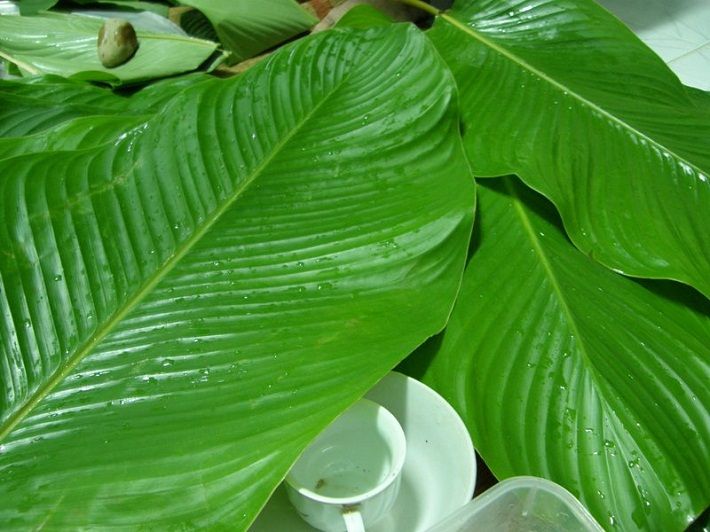
When starting to wrap Bánh Chưng, make sure to dry the dong leaves!
Tip: According to the wisdom passed down by many, if the weather during the Lunar New Year is chilly, you can use 6 leaves. Conversely, if the weather is hot, you should use 10 leaves to ensure better preservation after boiling. The more dong leaves you use, the longer the boiling time will be.
Selecting Glutinous Rice
The glutinous rice for making Bánh Chưng should be of the seasonal variety or golden flower glutinous rice, with plump and uniform grains. Soak the rice in cold water for about 10-12 hours, then rinse and drain, and mix in a moderate amount of salt for added flavor. The characteristic taste of Bánh Chưng comes from the salty glutinous rice, the fragrance of mung beans, and the rich flavor of the meat… so be sure to adjust the salt according to the amount of rice, beans, and meat.
If you want the glutinous rice to be greener and more fragrant, you can use pandan leaves blended into a green juice to soak the glutinous rice. Rice soaked in pandan leaf juice will become beautifully green and fragrant when wrapped in Bánh Chưng!
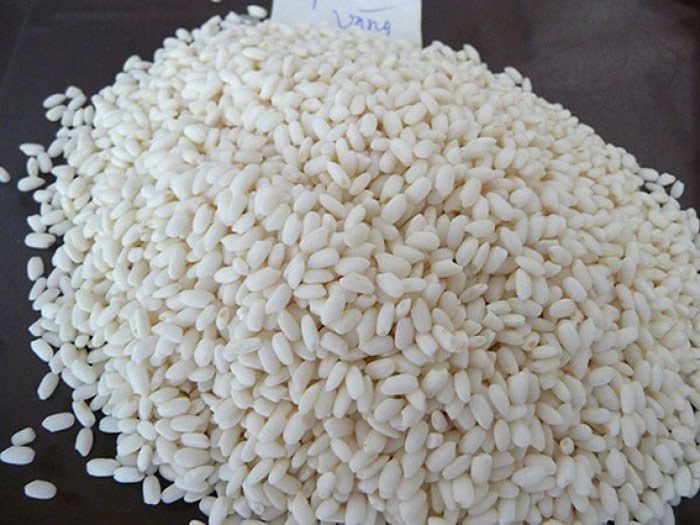
Selecting Mung Beans
Mung beans are the filling located near the center of the Bánh Chưng (with the meat). You can buy hulled or unhulled mung beans. If you purchase hulled beans, simply soak them; if they are unhulled, you will need to soak them to remove the skins and rinse the beans clean. Although it takes time to hull the beans, one of the keys to making delicious Bánh Chưng is to use whole mung beans for their fragrance, taste, and hygiene. The shiny yellow color of the mung beans symbolizes a new year filled with wealth and prosperity.

Bamboo Strips
Select bamboo segments that are 70-90 cm long, peel the outer bark, and then cut them into equal pieces. It is advisable to soak the bamboo strips before cutting to achieve a softer texture. After cutting them into strips, let them dry so that they are firm, soft, and easy to tie when wrapping the cake. Additionally, pay attention to the sturdiness of the strips to ensure they do not break apart during the cake boiling process.
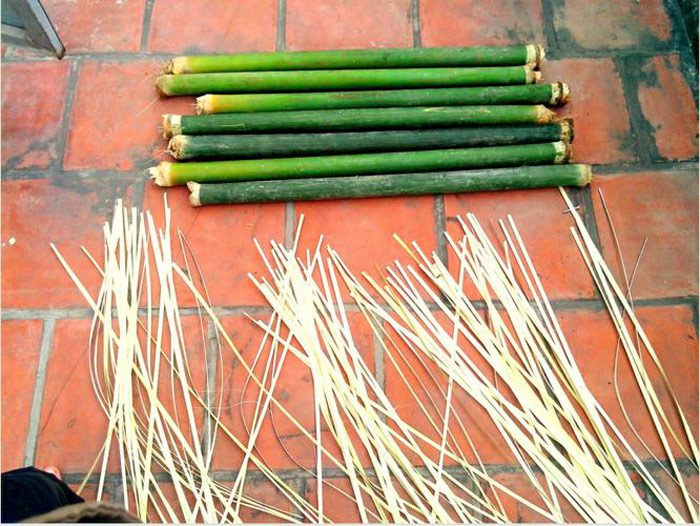
Dried Shallots and Meat
To wrap delicious bánh chưng (square sticky rice cake), dried shallots and meat are essential. Clean the dried shallots, remove the skin, and chop them finely. Use freshly ground black pepper or buy some from the market. The cake filling consists of pork, which includes both lean and fatty cuts (usually pork belly). The fat adds richness to the cake, symbolizing the prosperity of the family, while the lean meat represents joy for the new year. Cut the meat into evenly sized pieces, marinate with just enough seasoning, and sprinkle a little black pepper for an aromatic and slightly spicy flavor that will enhance the cake after cooking.
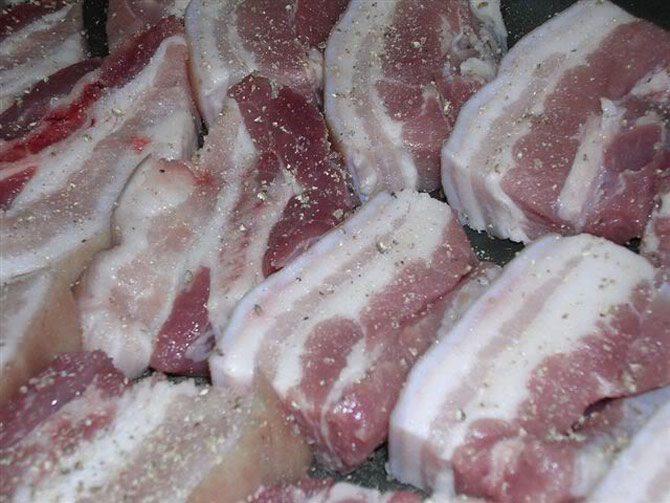
One important note is that you should not use fish sauce to marinate the meat for the bánh chưng, as this will make the wrapped cake spoil quickly!
Wishing you success!



















































